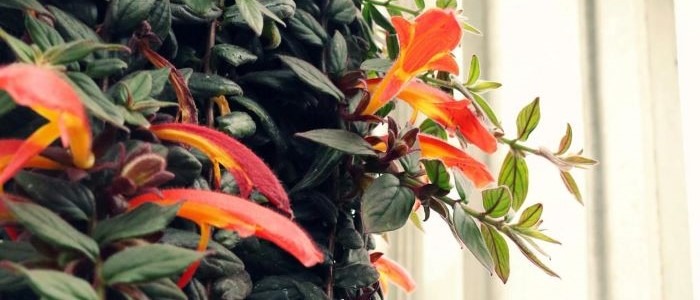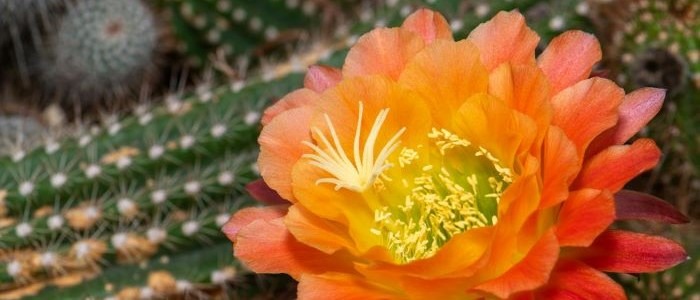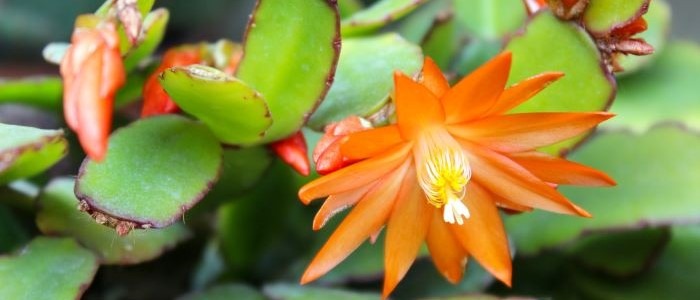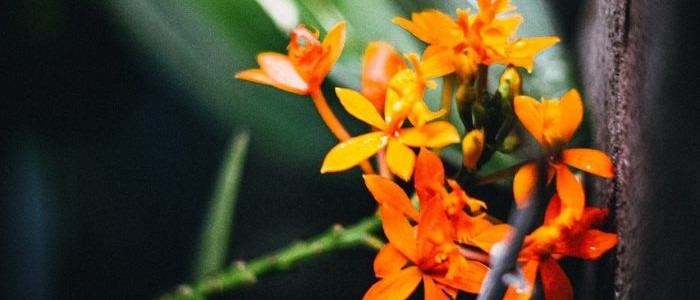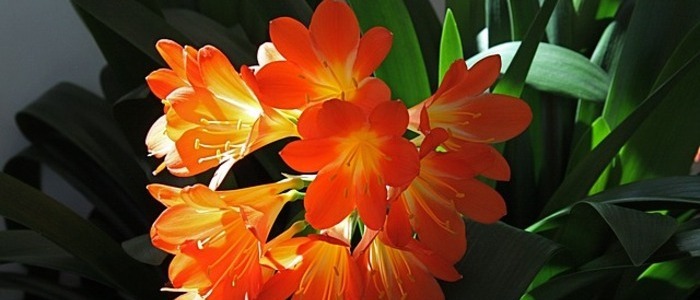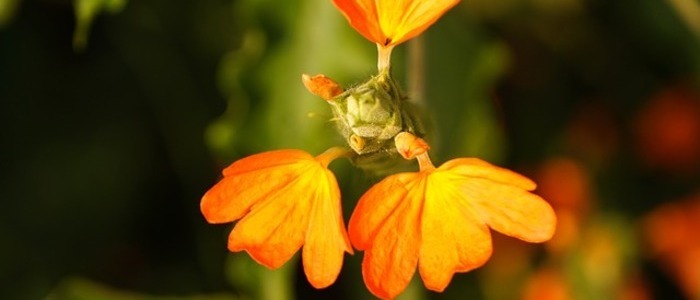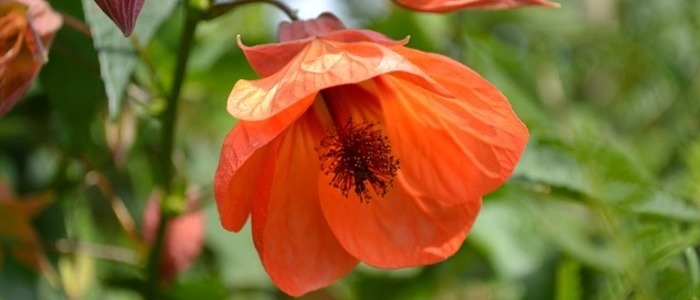The Flame Violet Plant (Episcia cupreata) is an attractive, low-maintenance houseplant that has become increasingly popular among indoor gardeners. Native to tropical rainforests in Central and South America, these plants only grow up to 6 inches in height and width. They are a species of small flowering plant in the family Gesneriaceae and thrive in partially shaded areas.
When growing Flame Violets indoors, you should aim to provide them with bright, indirect light. This means avoiding direct sunlight but also ensuring they get plenty of light throughout the day. You should also maintain consistent temperatures between 65-75°F and keep the soil moist but not soggy. In terms of fertilizing, you can feed your Flame Violet plant once every two weeks during its growing season using a balanced liquid fertilizer diluted by half or an all purpose slow release granular fertilizer applied twice a year.
It is important to make sure your Flame Violet Plant gets enough water but does not sit in water for too long as this can cause root rot. Therefore, it is best to use a pot with drainage holes and check the soil for moisture daily before watering if needed – when the top layer feels dry then it’s time for a drink!
In order to ensure your Flame Violet Plant stays healthy and vibrant for years to come, it is important to watch out for common pests such as aphids or mealybugs which may appear on the leaves or stems of your plant. If you spot any pests on your plant then you should remove them with either a cotton swab dipped in rubbing alcohol or insecticidal soap solution spray. Additionally, look out for any leaf spotting that could be caused by fungal diseases such as powdery mildew which can occur if there is too much humidity in the air around your plant.
To prevent this from happening try misting your plant regularly and keeping it away from drafts or heat sources that could dry out its leaves too quickly. With proper care and attention, the Flame Violet Plant will reward you with stunning blooms when given ample access to sunlight – making it an ideal choice for those looking to add some color and life into their home!
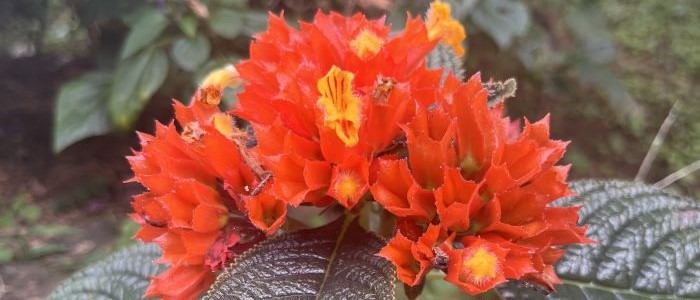
The Flame Violet Frequently Asked Questions
Does Episcia cupreata need sunlight?
Yes, Episcia cupreata, commonly known as Flame Violet, requires bright but indirect sunlight. Direct sunlight can scorch its leaves and cause damage, so it is best to place it in a location with filtered or shaded light. However, it still needs a sufficient amount of light to thrive and produce its vibrant reddish-orange flowers.
Are Episcia cupreata plants toxic?
Episcia cupreata plants are not toxic to humans or pets, making them a safe choice for households with curious children or animals. However, while Episcia cupreata is generally safe, some individuals may have mild allergic reactions to the plant's sap or leaves, so it is important to handle them with care.
Ideal Growing Conditions for Flame Violet Plants
The Flame Violet Plant (Episcia cupreata) is a beautiful and delicate houseplant that requires the right conditions to thrive. This section will provide an overview of the ideal growing conditions for Flame Violets, including the preferred temperature range, humidity levels, lighting, soil type, fertilization schedule, and how to protect them from extreme temperatures. With proper care and attention, you can ensure your Flame Violets stay healthy and beautiful for years to come.
When it comes to temperature, the Flame Violet Plant prefers temperatures ranging between 65-75°F (18-24°C). It should not be exposed to temperatures lower than 55°F (13°C) or higher than 80°F (27°C). During winter months in colder climates, it is important to keep your plant away from drafts and cold windowsills. Additionally, they should not be placed near sources of heat such as fireplaces or radiators.
Humidity levels are also important when caring for Flame Violets; they prefer a humid environment with levels ranging between 40-60%. If your home is particularly dry during the winter months – which is common in many homes – you can increase moisture levels by placing a humidifier nearby or misting your plant regularly with distilled water.
Lighting requirements vary depending on the variety of plant you have chosen; some varieties require bright indirect light while others may do better in lower light conditions. As a general rule of thumb, avoid exposing your plants directly to sunlight as this can cause burning or fading of foliage. Instead opt for bright but filtered light coming through curtains or blinds that create dappled shade throughout the day.
For soil type you’ll want something well-draining like a soilless potting mix specifically designed for epiphytic plants like flame violets or African violets. To improve drainage further you can mix in some horticultural charcoal into the soil before planting as this will help prevent root rot and other fungal diseases caused by overly moist soils.
Flame violets should be fertilized every two weeks during their active growing season using a balanced fertilizer diluted at half strength such as 10-10-10 solutions applied directly onto damp roots using a watering can with fine spray attachment – never use dry fertilizer on these plants as this could burn their roots! You may also choose to use liquid fertilizer every week instead if desired – just make sure not to overfertilize because this could cause nutrient toxicity which would lead to poor growth and discolored leaves over time.
Finally, it’s important to take extra precautions when protecting your flame violet from extreme temperatures – both hot and cold! When bringing them indoors during cooler weather make sure all air vents are closed off around them so as not to expose them directly to any drafts coming from outside sources such as air conditioners or heating units; conversely if taking them outdoors during warmer months provide shade by positioning them beneath trees where possible and always move back inside once temperatures start dropping again at nightfall!
Tips for Fertilizing and Watering Flame Violet Plants
When caring for Flame Violet Plants, the most important factor is providing the right nutrients and water. Fertilizing and watering should be done regularly, but not too frequently, as this can lead to nutrient burn or root rot. Here are some tips to ensure your Flame Violets stay healthy and happy:
Fertilize every two weeks with a balanced liquid fertilizer diluted at half strength. This will make sure your plants get enough nutrients without overdoing it. Avoid fertilizers that contain high levels of nitrogen, as this can cause foliage burn. If you are unsure of what fertilizer to use, consult with your local garden center expert for advice on which one is best for your Flame Violets.
Make sure the soil mix you use is well-draining and not too compacted. A good potting mix should include peat moss or coir fiber, perlite or vermiculite, and organic material such as compost or aged manure. This will help keep moisture in the soil while also allowing excess water to drain away from the roots quickly so they don’t become waterlogged.
Maintain moderate humidity levels around 40-60%. Too much humidity can lead to fungal growth while too little can cause wilting leaves and other signs of drought stress. To increase humidity levels around your Flame Violets you can mist them regularly with a spray bottle filled with distilled water or place a humidifier nearby if you live in a dry climate.
Water from the bottom up instead of the top down when possible by submerging the pot in a container full of warm water until all air bubbles stop rising from the bottom of it (this usually takes about 10 minutes). This method helps prevent water from getting trapped between leaves that could potentially cause disease if left unchecked. Don’t forget to empty any excess water out once finished!
By following these tips for fertilizing and watering Flame Violet Plants (Episcia cupreata), you can create an ideal environment for them to thrive in! With proper care and attention, these beautiful houseplants will reward their owners with stunning blooms for years to come!
How to Propagate the Flame Violet Plant
Propagating the Flame Violet Plant (Episcia cupreata) is a great way to increase your plant collection or share with friends. The summer months offer the best conditions for propagation as the active growth of the plant provides ample energy and nutrients to produce roots and shoots. Utilize stem cuttings or division for propagation, with stem cuttings ideally being taken from mature, healthy stems.
To further encourage root formation, dip the end of the cutting in rooting hormone powder or gel before planting in a well-draining soil mix. Be sure to maintain moisture levels – neither soggy nor dry – while allowing excess water to escape via adequate drainage holes in your pot.
It may take several weeks for roots to form on Flame Violets; patience is an absolute must! Gently remove one of the cuttings from its pot every few weeks to inspect for evidence of root growth such as tiny white hairs along the stem. If no signs are visible after two months, give it more time as conditions can sometimes affect root development.
Once rooted properly, Flame Violets will need bright indirect light and regular watering with distilled or rainwater in order to stay healthy and robustly colored over time. Shield them from direct sunlight which could burn their leaves and keep humidity levels at 40-60% through damp air if possible; overwatering should be avoided as this can lead to fungal diseases such as root rot which could damage or kill your plants. With proper care you can successfully propagate your Flame Violet Plant – enjoy its vibrant colors for years!
Common Pests and Diseases that Affect Flame Violet Plants
The Flame Violet Plant (Episcia cupreata) is a beautiful houseplant with striking blooms, but unfortunately it can be susceptible to various pests and diseases. Identifying the pest or disease quickly can help ensure your plant stays healthy and thrives for years to come.
Aphids, mealybugs, spider mites, and whitefly are some of the most common pests that affect Flame Violets. Aphids are small insects that suck sap from the stems and leaves of the plant. Mealybugs feed on the same resources as aphids but tend to hide in crevices or under leaves.
Spider mites spin webs on stems and leaves while they feed and cause yellow spots or browning of foliage. Lastly, whiteflies feed on new growth which causes stunted development in young plants. All of these pests can be controlled through regular spraying with insecticidal soap which will kill them without harming the plant itself.
In addition to pests, Flame Violets can also suffer from certain fungal diseases such as gray mold or root rot and leaf spot. Gray mold is caused by the fungus Botrytis cinerea which thrives in damp conditions. It is identifiable by light grey patches on stems or flowers where there has been moisture stress.
Root rot is caused by over-watering which leads to soft brown roots that may break apart easily when touched; it is important to take care not to overwater Flame Violets in order to prevent this disease from occurring. Leaf spot appears as dark lesions on both sides of a leaf; it can spread quickly so should be treated immediately with fungicidal sprays containing copper compounds once identified.
Viruses such as mosaic virus can also affect Flame Violets, causing discoloration of foliage along with stunted growth of flowers and leaves; however this virus is difficult to diagnose so if you suspect your plant may have been affected it’s best to contact an experienced horticulturalist for advice as soon as possible in order to save your plant from further damage or death.
Overall, keeping an eye out for signs of common pests and diseases that affect Flame Violet Plants can help ensure your plant remains healthy and continues blooming throughout its life span!
Conclusion
This final section of the article provides a few key reminders to ensure your Flame Violet Plant stays healthy and vibrant. It is important to observe your plant on a regular basis, as it is prone to pests and diseases, and to remove any affected parts if you notice discoloration or wilting. Propagation is also a great way to create more plants with minimal effort.
To get the most out of your Flame Violet Plant, make sure you provide it with the right amounts of lighting, water, and fertilizer. Avoid direct sunlight and overwatering as this can lead to leaf burn or root rot. During summer months, be sure to mist the leaves regularly with distilled water in order to increase humidity levels around 40-60%. Additionally, fertilize about every two weeks with a balanced fertilizer diluted at half strength in order to promote healthy growth.
Finally, keep an eye out for common pests and diseases such as aphids, mealybugs, spider mites, whitefly, gray mold, root rot leaf spot or mosaic virus. If you notice any of these problems developing on your plant it’s best to take action quickly in order to prevent further damage. Regular spraying with insecticidal soap or fungicidal sprays containing copper compounds can help control these issues before they become too severe.
By following these tips and paying attention to your Flame Violet Plant’s needs you can ensure that it will remain healthy and beautiful for years to come!
Other House Plants With Orange Flowers


